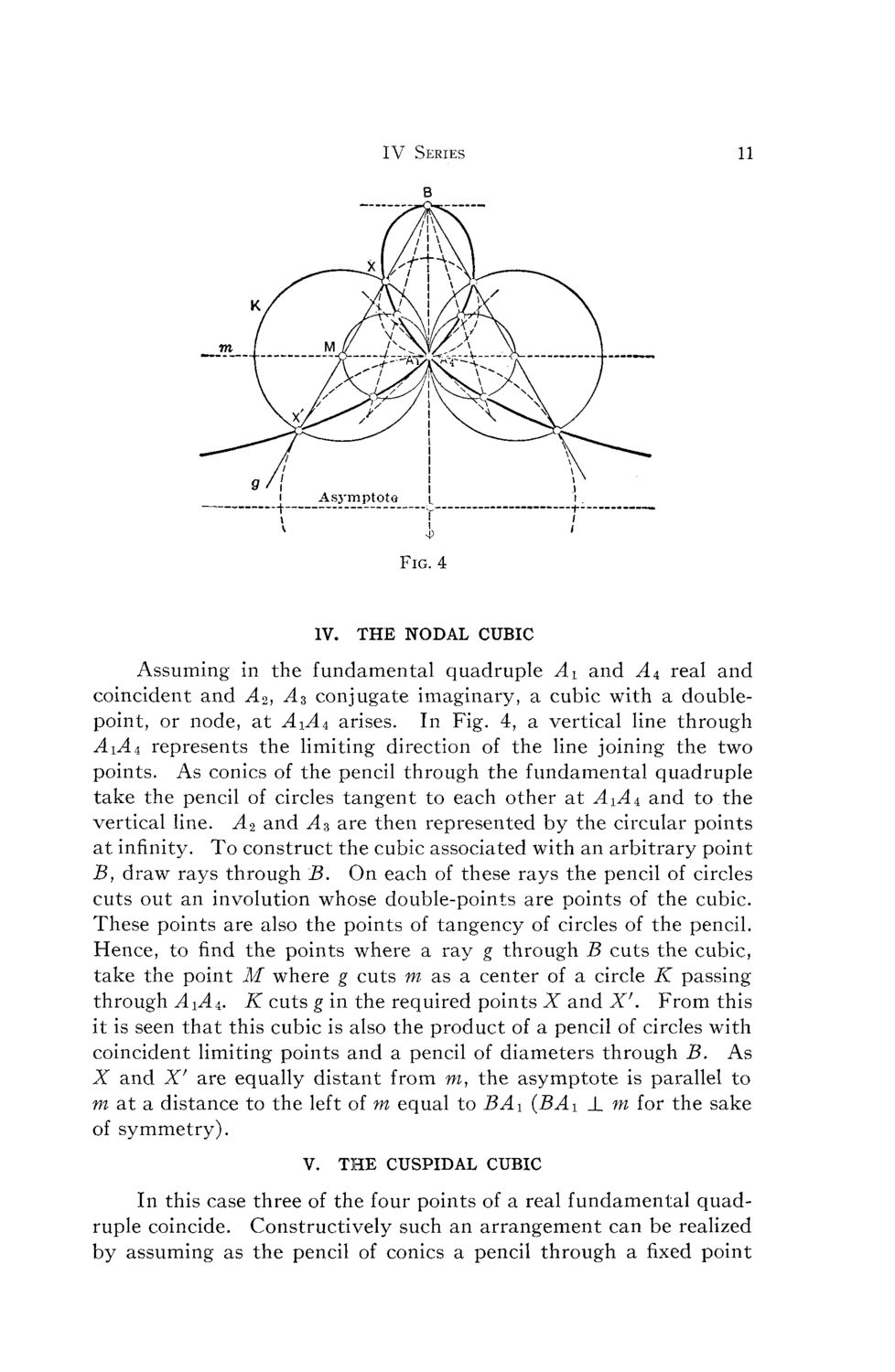| |
| |
Caption: Mathematical Models by Arnold Emch - Series 4 (1928)
This is a reduced-resolution page image for fast online browsing.

EXTRACTED TEXT FROM PAGE:
IV Series Fig. 4 IV. THE NODAL CUBIC Assuming in the fundamental quadruple A± and A4 real and coincident and A2, As conjugate imaginary, a cubic with a doublepoint, or node, at A\A± arises. In Fig. 4, a vertical line through AiA4 represents the limiting direction of the line joining the two points. As conies of the pencil through the fundamental quadruple take the pencil of circles tangent to each other at A \A± and to the vertical line. A2 and As are then represented by the circular points at infinity. T o construct the cubic associated with an arbitrary point B, draw rays through B. O n each of these rays the pencil of circles cuts out an involution whose double-points are points of the cubic. These points are also the points of tangency of circles of the pencil. Hence, to find the points where a ray g through B cuts the cubic, take the point M where g cuts m as a center of a circle K passing through A iA 4 K cuts g in the required points X and X'. From this . it is seen that this cubic is also the product of a pencil of circles with coincident limiting points and a pencil of diameters through B. As X and X ' are equally distant from m, the asymptote is parallel to m at a distance to the left of m equal to B A i (BA i J m for the sake _ of symmetry). V. THE CUSPIDAL CUBIC In this case three of the four points of a real fundamental quadruple coincide. Constructively such an arrangement can be realized by assuming as the pencil of conies a pencil through a fixed point
| |